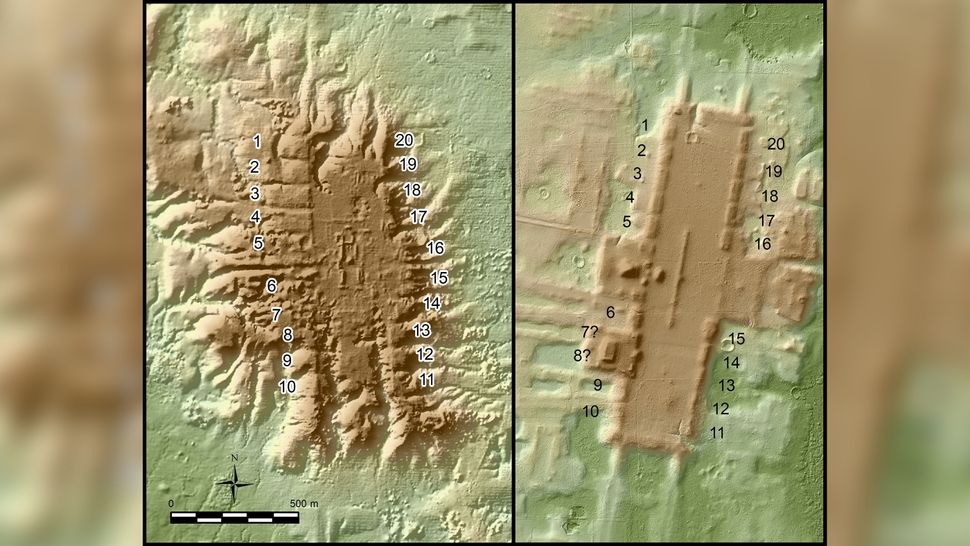By Stephanie Pappas about 1 hour ago

These lidar images show San Lorenzo (left), an Olmec site that peaked between 1400 B.C. and 1150 B.C.), and Aguada Fénix (right), a Maya site primarily occupied between 1000 B.C. and 800 B.C. Both show a similar pattern of 20 rectangular platforms lining the plaza. In later Maya calendars, 20 was the base unit for counting days, suggesting that this timekeeping system was already in development before 1000 B.C. (Image credit: Takeshi Inomata)
Ancient Central American people may have designed their cities around an early iteration of the Maya calendar.
A new study of ancient population centers in western Guatemala and southern Mexico reveals 478 separate complexes, many of which seem based on a prototype city built around 1400 B.C. Many of these complexes have never been discovered, surveyed or excavated until now. But their shapes, detectable from above with a technology called lidar — which stands for "light detection and ranging" — suggest many were oriented with the sunrise on certain important days and seemed to use the number 20, — the basis of later written calendars, — as their fundamental unit.
"We don't have the written calendar at this time yet," said Takeshi Inomata, an archaeologist at the University of Arizona and the lead researcher of the new study. "[That] comes much later, several centuries later than these sites. But this is a very tantalizing sign that actually people already had a calendar system that's based on the number 20."
Maya calendars and Mesoamerican architecture
The calendar that seemed important in constructing these sites is not the famous Maya calendar that some claimed predicted the end of the world in 2012. That's the Maya Long Count calendar, which was designed for keeping track of very long spans of time. For shorter periods, the Maya also worked with the 260-day Tzolk'in calendar, which they used for scheduling religious rituals, and the Haab', a 365-day calendar based on Earth's rotation around the sun. The Tzolk'in and the Long Count calendars both used repeating cycles of 20 for counting the days. Written versions of the Long Count calendar are found from from A.D. 800 and later, Live Science previously reported.
More:
https://www.livescience.com/maya-olmec-city-plan.html?utm_source=notification
 = new reply since forum marked as read
= new reply since forum marked as read
